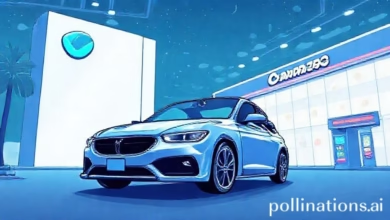Central Bank Digital Currencies: Shaping the Future of Money and Financial Systems

As the digital age continues to reshape our daily lives, the concept of money is undergoing a profound transformation. Central Bank Digital Currencies (CBDCs) are emerging as a revolutionary financial innovation, poised to redefine how we perceive and interact with currency itself. With countries around the globe exploring or piloting their own digital currencies, the implications for the financial landscape are substantial. This article delves into the future of CBDCs, beginning with their rise and the technological advancements enabling them. We will explore the economic ramifications of their adoption, considering how they may revolutionize financial systems and enhance monetary policy. However, as with any technological advancement, the journey toward widespread implementation is fraught with challenges, particularly concerning security, privacy, and public acceptance. Join us as we navigate this complex terrain and uncover the potential impacts of CBDCs on our economies and everyday lives.
- 1. "Redefining Currency: The Rise of Central Bank Digital Currencies"
- 2. "Economic Implications: How CBDCs Could Transform Financial Systems"
- 3. "Navigating Challenges: Security, Privacy, and Adoption of CBDCs"
1. "Redefining Currency: The Rise of Central Bank Digital Currencies"
In recent years, the concept of currency has undergone a significant transformation, driven by technological advancements and evolving consumer preferences. Central Bank Digital Currencies (CBDCs) represent a pivotal shift in this landscape, blending the traditional functions of money with the innovative capabilities of digital technology. As central banks around the world explore the implementation of CBDCs, they are not only redefining currency but also reshaping financial systems and economic interactions.
CBDCs are digital forms of a country's fiat money, issued and regulated by the nation's central bank. Unlike cryptocurrencies, which operate on decentralized networks and are often subject to high volatility, CBDCs aim to maintain the stability and trust associated with traditional currencies. This stability is crucial for governments and central banks as they seek to enhance monetary policy effectiveness and improve the financial ecosystem.
The rise of CBDCs is largely motivated by the need to adapt to a rapidly digitizing economy. With the proliferation of mobile payment solutions and digital wallets, consumers are increasingly seeking faster, more secure, and more convenient ways to transact. CBDCs promise to meet these demands, potentially enhancing transaction efficiency and reducing costs associated with cash handling and bank transfers. Moreover, they can provide a more inclusive financial system, offering unbanked populations access to secure and reliable digital payment options.
As central banks advance in their research and experimentation with CBDCs, various models are emerging. Some countries are focusing on retail CBDCs, which would be accessible to the general public, while others are exploring wholesale CBDCs aimed at improving interbank transactions and settlements. Each model presents unique implications for privacy, security, and financial stability, necessitating careful consideration and strategic planning.
The implementation of CBDCs also raises important questions about the future of traditional banking. As digital currencies gain traction, the role of commercial banks may shift, as individuals and businesses could hold CBDCs directly with central banks, bypassing the need for intermediaries. This could lead to a reconfiguration of the financial landscape, where banks adapt by focusing on value-added services rather than traditional deposit-taking and lending functions.
In conclusion, the rise of Central Bank Digital Currencies is poised to redefine currency as we know it, offering a blend of innovation, stability, and efficiency. As central banks navigate this uncharted territory, the potential impacts on financial systems, consumer behavior, and the broader economy will be profound. The future of money is digital, and CBDCs may very well be at the forefront of this transformation, shaping the way we conduct transactions, store value, and engage with the financial world.
2. "Economic Implications: How CBDCs Could Transform Financial Systems"
Central bank digital currencies (CBDCs) have the potential to fundamentally reshape financial systems, ushering in a new era of economic interaction and monetary policy implementation. One of the primary economic implications of CBDCs is their ability to enhance the efficiency of payment systems. By enabling instant and secure transactions, CBDCs can reduce the reliance on traditional banking infrastructure, streamline cross-border payments, and lower transaction costs. This increased efficiency could lead to greater financial inclusion, particularly in underbanked regions where access to banking services is limited.
Furthermore, CBDCs may alter the dynamics of monetary policy. With direct access to digital currencies, central banks could implement more effective and responsive monetary measures. For instance, they could facilitate direct transfers to individuals during economic downturns, thereby increasing the speed and impact of stimulus measures. This shift could also allow for more precise control over money supply and interest rates, providing central banks with new tools to manage inflation and economic stability.
The introduction of CBDCs could also challenge existing financial institutions by offering consumers an alternative to traditional banking services. As CBDCs gain acceptance, they may prompt banks to innovate and adapt their offerings to maintain competitiveness. This could lead to a more diverse financial ecosystem, where consumers benefit from increased options and potentially lower costs. However, the disruption caused by CBDCs could pose risks to the stability of traditional banks, particularly if a significant number of customers choose to hold funds in digital currency rather than in bank accounts.
Moreover, CBDCs might facilitate greater transparency in financial transactions, allowing for improved tracking of money flows and enhanced regulatory oversight. This could help combat issues such as money laundering and tax evasion, promoting a more robust and accountable financial system. However, the increased transparency also raises concerns about privacy and surveillance, necessitating careful consideration of the balance between regulatory oversight and individual rights.
In summary, the economic implications of CBDCs are profound and multifaceted. They have the potential to increase efficiency and inclusivity, transform monetary policy, challenge the existing banking framework, and enhance regulatory capabilities. As countries explore the implementation of CBDCs, the interplay between innovation and regulation will be critical in shaping a future financial landscape that benefits all stakeholders.
3. "Navigating Challenges: Security, Privacy, and Adoption of CBDCs"
As central bank digital currencies (CBDCs) gain traction globally, navigating the challenges of security, privacy, and adoption becomes paramount for successful implementation.
Security remains a foremost concern for CBDC development. As digital currencies are inherently susceptible to cyber threats, central banks must invest heavily in robust cybersecurity measures to safeguard user data and prevent fraudulent activities. The decentralized nature of some digital currencies can complicate this effort, as central banks seek to maintain control while ensuring that their systems are resilient against attacks. Establishing a secure infrastructure that can withstand hacking attempts and system failures is essential to build public trust in CBDCs.
Privacy is another critical factor that policymakers must address. Unlike cash transactions, which provide anonymity, digital currencies may allow for increased government oversight and tracking of financial behaviors. Striking a balance between preventing illicit activities, such as money laundering and tax evasion, and protecting individual privacy rights is a complex challenge. Central banks must engage with stakeholders, including privacy advocates and the public, to design systems that incorporate privacy-enhancing technologies while aligning with regulatory frameworks.
Finally, the adoption of CBDCs hinges on public acceptance and the willingness of financial institutions to integrate these digital currencies into their existing systems. Education and outreach efforts will be vital in demystifying CBDCs for consumers and businesses alike. Addressing concerns about usability, accessibility, and the potential displacement of traditional banking services will be crucial in fostering a positive reception. Moreover, central banks must collaborate with financial institutions to ensure a seamless transition that enhances the overall payment ecosystem rather than disrupting it.
In conclusion, while the potential benefits of CBDCs are significant, overcoming the challenges related to security, privacy, and adoption will be critical to their success. A thoughtful and inclusive approach will not only help to mitigate risks but also pave the way for a digital currency landscape that is secure, user-friendly, and beneficial for all stakeholders involved.






